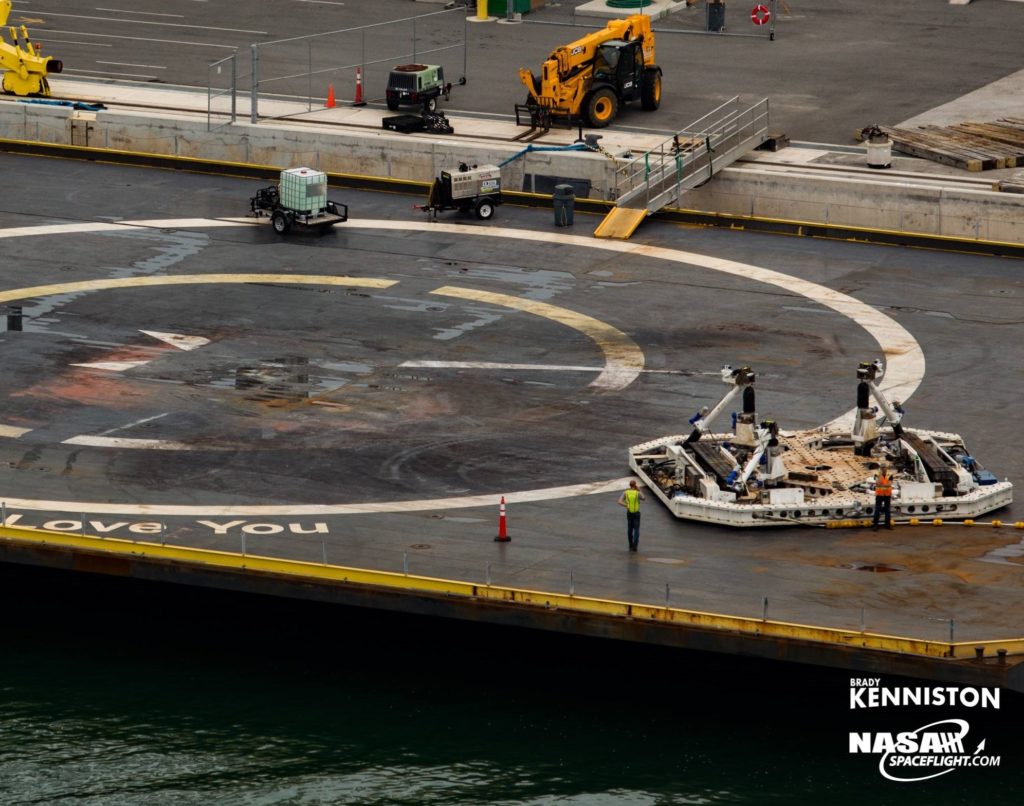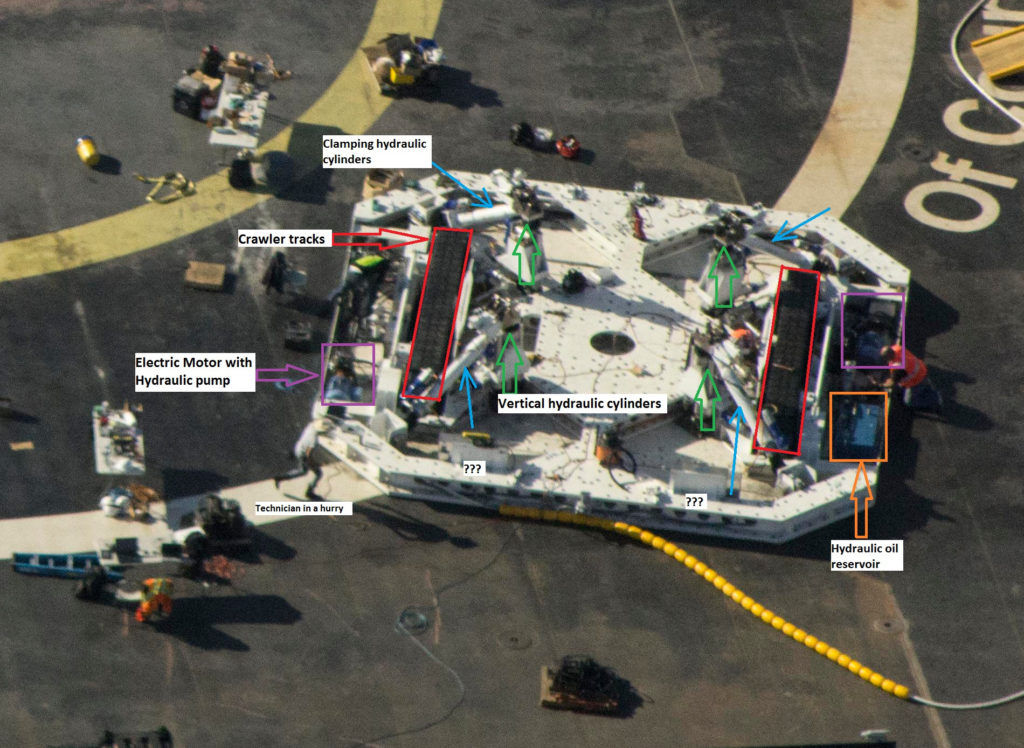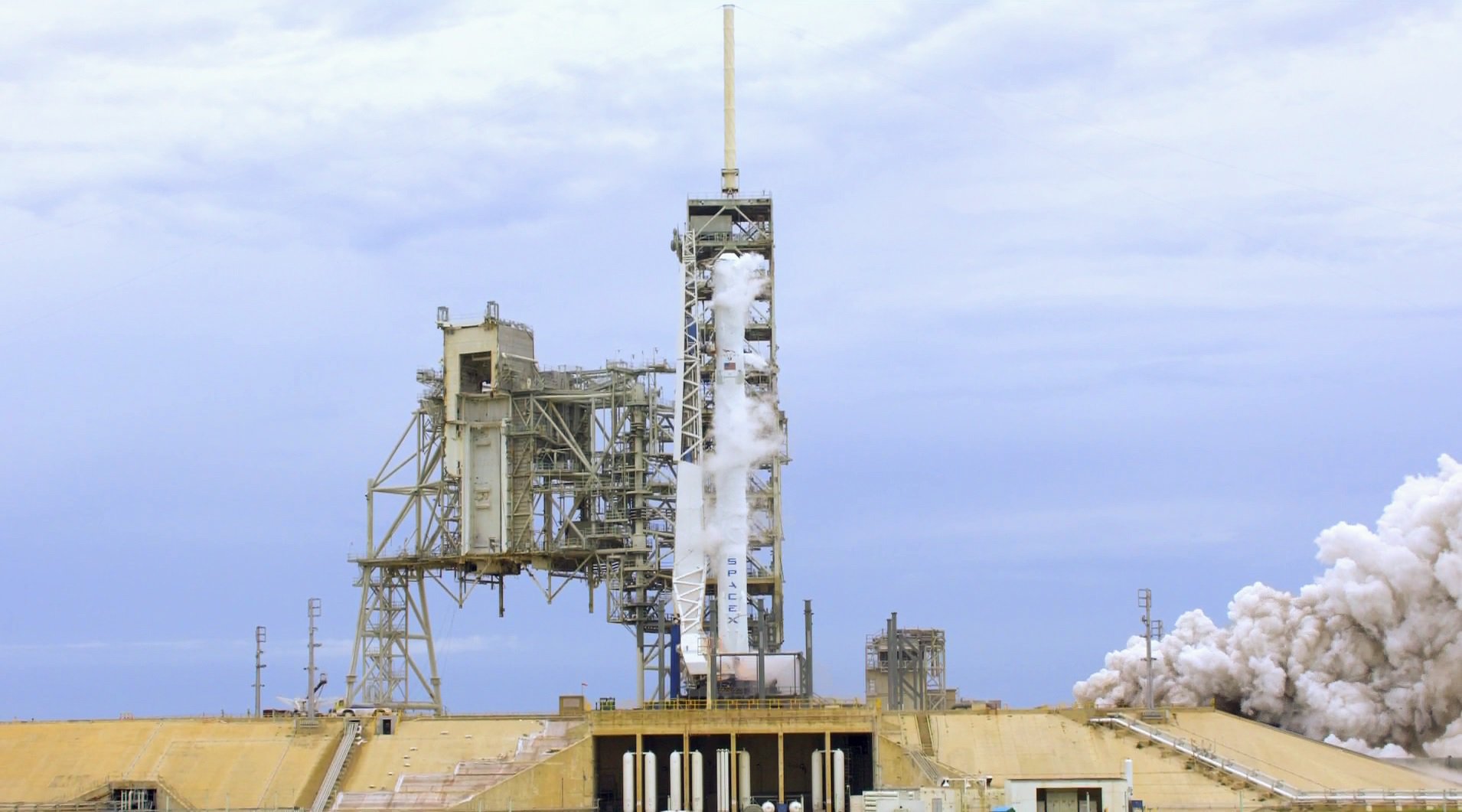
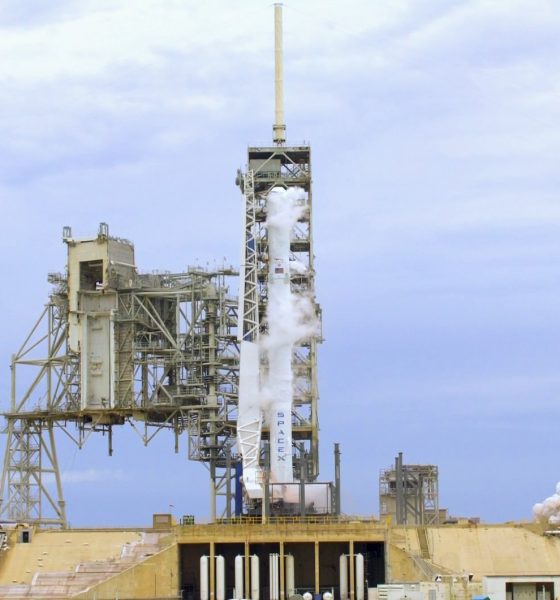
News
SpaceX ready for second ever reused Falcon 9 launch on June 19
SpaceX’s Falcon 9 “1029” is nearly ready to conduct its second commercial launch later this weekend after today’s successful static fire at Launch Complex 39A. Static fire was initially planned for June 13th but was delayed to the 14th and then the 15th, with the launch date also being delayed by two days to June 19th. This small delay is likely a result of launch pad readiness procedures taking a bit longer than intended.
Now scheduled with a window of 2-5 p.m. EST on June 19th, a successful launch will mark the second successful reuse of a Falcon 9 first stage and thus the second ever reuse of an orbital-class rocket. This particular first stage, 1029, is coincidentally symbolic in the sense that it launched SpaceX’s first mission after the Amos-6 failure last year, when a complex series of events led to a massive explosion that destroyed Falcon 9, the Amos-6 payload, and severely damaged the site it was to launch from. Elon Musk deemed it “the most difficult and complex failure” SpaceX had ever faced. It was all the more surprising that the company returned to flight just over four months later, in an industry in which failures of the same scale can result in launch vehicle groundings of multiple years (the Space Shuttle, Orbital ATK’s Antares).
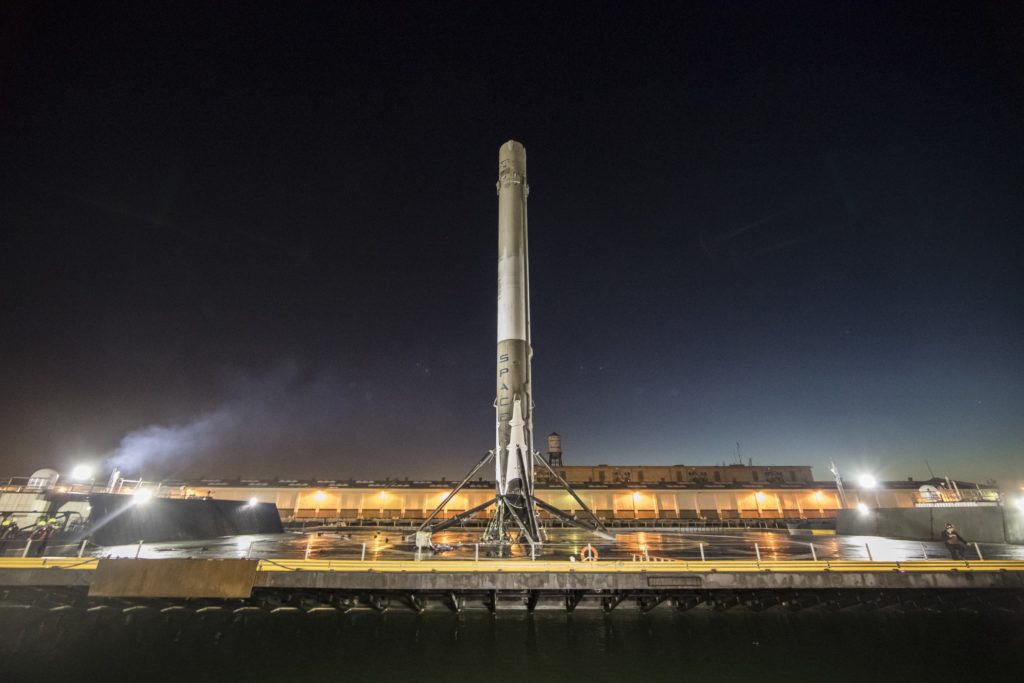
1029 after recovery in the Pacific Ocean. 1 in the “1029” indicates that it is a first stage and 029 implies that it is the 29th Falcon 9 to be manufactured. SpaceX has recently begun to physically label each stage with their serial numbers between their landing legs. (SpaceX)
The best possible demonstration of a launch company’s confidence in their ability to spring back from a trying failure may well be a willingness to reuse the actual launch vehicle that marked their return to flight. And that is exactly what SpaceX is about to attempt with the second launch of 1029, which flawlessly orbited Iridum’s first set of ten NEXT satellites in the company’s return to flight after Amos-6.
Falcon 9 1029 will be tasked with placing the satellite in a geostationary transfer orbit, meaning that the satellite itself will use its own bi-propellant thrusters to reach its final geostationary orbit above Earth. With a mass estimated around 4000 kilograms, 1029 will very likely be able to attempt a recovery by landing on SpaceX’s West coast Autonomous Spaceport Drone Ship (ASDS), known as Of Course I Still Love You (OCISLY). There have also been reports of the mythical Optimus Prime robot conducting tests aboard OCISLY yesterday, hinting that this recovery may be the first time that the robot will be allowed to attempt to secure the recovered first stage after landing on the drone ship.
Static fire test of Falcon 9 complete—targeting June 19 launch of BulgariaSat-1 from historic Pad 39A pic.twitter.com/sndsLhKtwA
— SpaceX (@SpaceX) June 15, 2017
An automated method of securing recovered stages after landing has the potential to progress SpaceX’s goal of rapid reusability, and BulgariaSat-1 will mark the beginning of a schedule that has SpaceX attempting to launch Falcon 9 three times in 14 days, a truly impressive accomplishment even if delays stretch it out to 20+ days.
- Optimus Prime roving around OCISLY on June 13th. (Brady Kenniston/NASAspaceflight.com)
- Optimus Prime captured by helicopter while conducting tests in March earlier this year. (Source: Reddit /u/riddlerthc)
BulgariaSat-1 has lately been called Bulgaria’s first true satellite, but it is really the country’s second satellite. Manufactured and assembled by the Palo Alto, California-based Space Systems Loral (SSL), it will offer much broader coverage of the Europe and Balkans regions and provide high quality satellite television and telecommunications services in a bid to expand Bulsatcom’s market.
Much like cars are often built off of the same chassis, BulgariaSat-1 is based upon a communications satellite bus (SL-1300) that has flown successfully dozens of times and currently has dozens of active variants in geostationary orbits. BulgariaSat-1 will be the sixth SL-1300 derived satellite that SpaceX themselves have launched, and the company has four other SL-1300 satellite scheduled for launch in 2017 and 2018.

News
Tesla aims to combat common Full Self-Driving problem with new patent
Tesla writes in the patent that its autonomous and semi-autonomous vehicles are heavily reliant on camera systems to navigate and interact with their environment.

Tesla is aiming to combat a common Full Self-Driving problem with a new patent.
One issue with Tesla’s vision-based approach is that sunlight glare can become a troublesome element of everyday travel. Full Self-Driving is certainly an amazing technology, but there are still things Tesla is aiming to figure out with its development.
Unfortunately, it is extremely difficult to get around this issue, and even humans need ways to combat it when they’re driving, as we commonly use sunglasses or sun visors to give us better visibility.
Cameras obviously do not have these ways to fight sunglare, but a new patent Tesla recently had published aims to fight this through a “glare shield.”
Tesla writes in the patent that its autonomous and semi-autonomous vehicles are heavily reliant on camera systems to navigate and interact with their environment.

The ability to see surroundings is crucial for accurate performance, and glare is one element of interference that has yet to be confronted.
Tesla described the patent, which will utilize “a textured surface composed of an array of micro-cones, or cone-shaped formations, which serve to scatter incident light in various directions, thereby reducing glare and improving camera vision.”

The patent was first spotted by Not a Tesla App.
The design of the micro-cones is the first element of the puzzle to fight the excess glare. The patent says they are “optimized in size, angle, and orientation to minimize Total Hemispherical Reflectance (THR) and reflection penalty, enhancing the camera’s ability to accurately interpret visual data.”
Additionally, there is an electromechanical system for dynamic orientation adjustment, which will allow the micro-cones to move based on the angle of external light sources.
This is not the only thing Tesla is mulling to resolve issues with sunlight glare, as it has also worked on two other ways to combat the problem. One thing the company has discussed is a direct photon count.
CEO Elon Musk said during the Q2 Earnings Call:
“We use an approach which is direct photon count. When you see a processed image, so the image that goes from the sort of photon counter — the silicon photon counter — that then goes through a digital signal processor or image signal processor, that’s normally what happens. And then the image that you see looks all washed out, because if you point the camera at the sun, the post-processing of the photon counting washes things out.”
Future Hardware iterations, like Hardware 5 and Hardware 6, could also integrate better solutions for the sunglare issue, such as neutral density filters or heated lenses, aiming to solve glare more effectively.
Elon Musk
Delaware Supreme Court reinstates Elon Musk’s 2018 Tesla CEO pay package
The unanimous decision criticized the prior total rescission as “improper and inequitable,” arguing that it left Musk uncompensated for six years of transformative leadership at Tesla.

The Delaware Supreme Court has overturned a lower court ruling, reinstating Elon Musk’s 2018 compensation package originally valued at $56 billion but now worth approximately $139 billion due to Tesla’s soaring stock price.
The unanimous decision criticized the prior total rescission as “improper and inequitable,” arguing that it left Musk uncompensated for six years of transformative leadership at Tesla. Musk quickly celebrated the outcome on X, stating that he felt “vindicated.” He also shared his gratitude to TSLA shareholders.
Delaware Supreme Court makes a decision
In a 49-page ruling Friday, the Delaware Supreme Court reversed Chancellor Kathaleen McCormick’s 2024 decision that voided the 2018 package over alleged board conflicts and inadequate shareholder disclosures. The high court acknowledged varying views on liability but agreed rescission was excessive, stating it “leaves Musk uncompensated for his time and efforts over a period of six years.”
The 2018 plan granted Musk options on about 304 million shares upon hitting aggressive milestones, all of which were achieved ahead of time. Shareholders overwhelmingly approved it initially in 2018 and ratified it once again in 2024 after the Delaware lower court struck it down. The case against Musk’s 2018 pay package was filed by plaintiff Richard Tornetta, who held just nine shares when the compensation plan was approved.
A hard-fought victory
As noted in a Reuters report, Tesla’s win avoids a potential $26 billion earnings hit from replacing the award at current prices. Tesla, now Texas-incorporated, had hedged with interim plans, including a November 2025 shareholder-approved package potentially worth $878 billion tied to Robotaxi and Optimus goals and other extremely aggressive operational milestones.
The saga surrounding Elon Musk’s 2018 pay package ultimately damaged Delaware’s corporate appeal, prompting a number of high-profile firms, such as Dropbox, Roblox, Trade Desk, and Coinbase, to follow Tesla’s exodus out of the state. What added more fuel to the issue was the fact that Tornetta’s legal team, following the lower court’s 2024 decision, demanded a fee request of more than $5.1 billion worth of TSLA stock, which was equal to an hourly rate of over $200,000.
Delaware Supreme Court Elon Musk 2018 Pay Package by Simon Alvarez
News
Tesla Cybercab tests are going on overdrive with production-ready units
Tesla is ramping its real-world tests of the Cybercab, with multiple sightings of the vehicle being reported across social media this week.

Tesla is ramping its real-world tests of the Cybercab, with multiple sightings of the autonomous two-seater being reported across social media this week. Based on videos of the vehicle that have been shared online, it appears that Cybercab tests are underway across multiple states.
Recent Cybercab sightings
Reports of Cybercab tests have ramped this week, with a vehicle that looked like a production-ready prototype being spotted at Apple’s Visitor Center in California. The vehicle in this sighting was interesting as it was equipped with a steering wheel. The vehicle also featured some changes to the design of its brake lights.
The Cybercab was also filmed testing at the Fremont factory’s test track, which also seemed to involve a vehicle that looked production-ready. This also seemed to be the case for a Cybercab that was spotted in Austin, Texas, which happened to be undergoing real-world tests. Overall, these sightings suggest that Cybercab testing is fully underway, and the vehicle is really moving towards production.
Production design all but finalized?
Recently, a near-production-ready Cybercab was showcased at Tesla’s Santana Row showroom in San Jose. The vehicle was equipped with frameless windows, dual windshield wipers, powered butterfly door struts, an extended front splitter, an updated lightbar, new wheel covers, and a license plate bracket. Interior updates include redesigned dash/door panels, refined seats with center cupholders, updated carpet, and what appeared to be improved legroom.
There seems to be a pretty good chance that the Cybercab’s design has been all but finalized, at least considering Elon Musk’s comments at the 2025 Annual Shareholder Meeting. During the event, Musk confirmed that the vehicle will enter production around April 2026, and its production targets will be quite ambitious.
